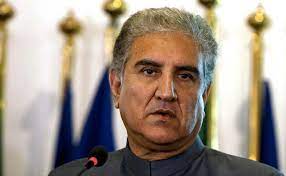China and Pakistan sign six agreements to expedite cooperation under the CPEC
The ambitious multibillion-dollar China-Pakistan Economic Corridor (CPEC) project and six key papers were expanded and accelerated by Pakistan and China on Monday, further solidifying their all-weather strategic ties.
The signing event was organized to commemorate the CPEC’s tenth anniversary. The CPEC is a collection of infrastructure and other projects that have been under development in Pakistan since 2013.

India opposes the CPEC because it passes through Pakistan-occupied Kashmir and links Gwadar Port in Balochistan, Pakistan, with Xinjiang, China.
A second agreement on the establishment of an expert exchange mechanism within the framework of the CPEC was also signed by Vice Chairman of China’s National Development and Reforms Commission Zhao Chenxin and Minister for Planning and Development Ahsan Iqbal.
In order to export dried chillies from Pakistan to China, the third document was signed by the Secretary of the Ministry of National Food Security Zafar Hassan and the Chinese Charge d’Affaires Pang Chunxue.
Asim Amin, a member of planning for the National Highway Authority, and Pang signed the fourth document on the feasibility study for realigning the Karakoram Highway Phase II project.
Through diplomatic channels, the two parties also agreed to support the crucial ML-1 rail upgrade project and signed an MOU on the Industrial Workers’ Exchange Programme.
In remarks made on the occasion, Prime Minister Sharif stated that the documents signed aimed to further strengthen economic ties between Pakistan and China. He also mentioned that over USD 25 billion in investments have already been made under the CPEC in Pakistan’s power and hydro sector, road infrastructure, and public transportation.
“We are now entering the second phase of the CPEC, which will envisage investments in sectors such as agriculture and information technology,” he said.
He expressed confidence in Pakistan’s ability to stand on its own two feet while reassuring that Pakistan was prepared to contribute to Chinese President Xi Jinping’s vision of the shared destiny of growth and prosperity.
He said that Pakistan and China have a special connection and pledged, “To achieve peace and prosperity in the country, we will emulate the Chinese model of development.”
“We are iron brothers and all-weather friends, and this friendship will continue and will not tolerate any obstacles in its way,” he said.
Prior to this, the vice premier of China, a member of the Communist Party’s governing Politburo, traveled to Pakistan for three days to take part in the celebration of the CPEC’s ten-year anniversary.
The Vice Premier He will visit the President and the Prime Minister and attend the CPEC 10th anniversary events, according to a previous statement from the Foreign Office.
The vice premier’s visit comes only days after Pakistan barely avoided going into default on its international debt.
China significantly contributed to the nation’s assistance by renewing more than USD 5 billion in loans.
CPEC, which started out as a project for USD 46 billion, subsequently grew to worth USD 62 billion.
The main agreement for the CPEC projects was reached in 2013, but President Xi Jinping’s 2015 visit to Pakistan marked its official debut.
Chinese President Xi introduced the BRI in 2013. With a network of land and water routes, it seeks to connect Southeast Asia, Central Asia, the Gulf area, Africa, and Europe.
With infrastructure projects throughout the globe financed by Chinese money, the BRI is seen as an effort by China to increase its influence overseas.
After Sri Lanka awarded China a 99-year lease on its Hambantota port as part of a debt exchange in 2017, claims that smaller nations are struggling under rising Chinese debt arose as a result of the project.







